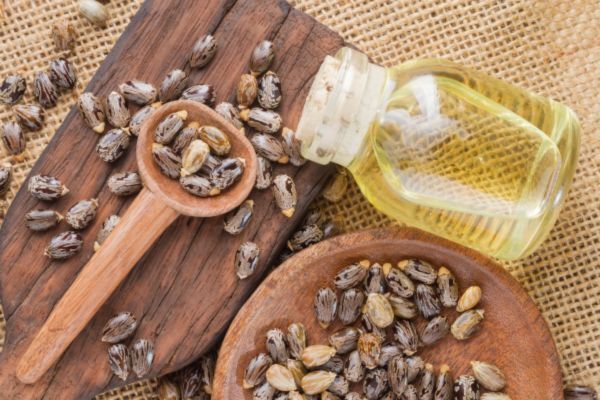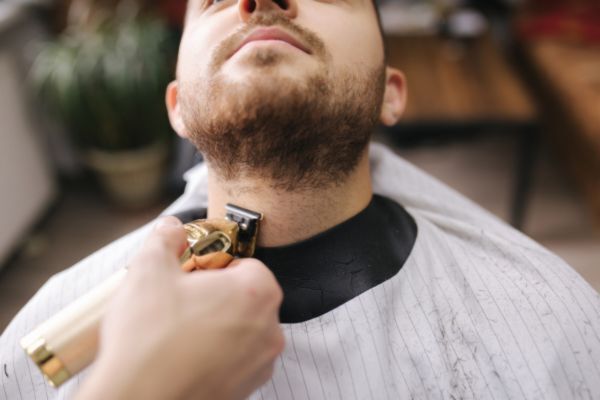How to Address Beard Patches with Natural Remedies
Jul 08, 2025 | By Maria Eliza Pineda

Having “beard patches,” or areas of your beard that are thin or have little to no hair growth, is a common problem among many men. It can be caused by genetics, age, stress, or nutrient deficiencies. For men who want to grow a thicker and fuller beard without using chemicals or medications, there are many natural solutions you can try. It’s important to remember that beard growth is a process and that it’s not instant. Proper discipline and consistency for at least 90 days will help you see real results.
Causes of Beard Patches
Stress and Cortisol
High levels of stress can cause hair thinning or loss, including in the beard area. Elevated cortisol (stress hormone) affects blood circulation and nourishment to the follicles.
Genetics and Hormone Levels
The primary cause of a patchy beard is genetics. If your father or grandfather had thin beard hair, you might have a similar growth pattern. Hormones such as testosterone and DHT (dihydrotestosterone) also play a big role in hair growth on the body.
Age and Natural Beard Development
Not all men’s beards grow at the same pace. It’s common for teenagers or men in their early 20s to have uneven beard growth. Over time and with age, patchy areas may fill in.
Commit to a 90-Day Growth Plan
To find out if the patchy areas can still grow, let your beard grow continuously for 90 days. Avoid shaving or trimming too much during this time. Track your progress weekly by taking photos. Remember, consistency and patience are the keys to success.
Skin Conditions and Autoimmune Factors
Some medical conditions like alopecia areata (alopecia barbae when on the beard) can cause sudden bald patches. If patchiness appears suddenly or worsens, it’s best to consult a doctor.
Improve Your Diet and Lifestyle

Eat Nutrient-Rich Foods
Proper nutrition directly affects hair health. Eat foods rich in biotin, such as eggs, nuts, and whole grains. Vitamins A, C, D, and E are also important and can be found in carrots, citrus fruits, and oily fish. Don’t forget zinc and omega-3 fatty acids found in seafood, spinach, and chia seeds. Protein from meat, tofu, and beans is also essential.
Get Enough Sleep, Hydration, and Manage Stress
Sleeping at least 7 to 8 hours every night helps repair your body and skin. Stay properly hydrated by drinking plenty of water daily. Managing stress through meditation, exercise, or simple walks helps balance your hormones.
Exercise Regularly to Improve Circulation and Hormone Balance
Regular physical activity improves blood flow and helps regulate hormones. This supports better nourishment of hair follicles and strengthens your immune system, which supports beard growth.
Natural Topical Remedies

Castor Oil for Thickening Hair
Castor oil is known to thicken and strengthen hair because of its high ricinoleic acid content. It improves circulation on the facial skin and enhances beard hair condition.
Rosemary Oil as a Natural Follicle Stimulant
Rosemary oil is a natural stimulant for hair growth. Studies show it effectively improves blood flow to the skin, helping revive dormant follicles.
Coconut Oil for Hydration and Protection
Coconut oil provides necessary moisture to the hair and skin. It helps prevent brittleness and breakage, resulting in healthier, shinier beard hair.
Onion and Garlic Juice as Natural Stimulants
Though the smell is strong, onion and garlic juice contain compounds that naturally stimulate hair growth. They help activate follicles that seem dormant or weak.
Application Tips for Natural Oils
It’s important to dilute essential oils like rosemary oil with carrier oils such as jojoba or coconut oil before massaging into the skin. Do this daily and gently massage to boost blood flow. Afterward, comb or brush to evenly distribute the oil and stimulate the follicles.
Physical Stimulation for Beard Growth
Microneedling to Improve Blood Flow and Collagen Production
Microneedling involves using a small roller with fine needles to create micro-injuries on the skin. This boosts collagen production and enhances blood flow to follicles, helping promote beard growth.
Regular Brushing and Combing
Brushing and styling your beard not only improves its appearance but also trains hair to grow in the right direction. It also helps distribute natural oils across your skin and hair.
Weekly Exfoliation to Remove Dead Skin Cells
Exfoliating helps clean clogged pores and remove dead skin. This frees follicles to grow hair without obstruction. Use mild scrubs made from natural ingredients like oatmeal or ground coffee.
Styling and Grooming Tips

Use Beard Balm or Wax to Cover Patchy Areas
When you have thin patches, using beard balm or wax can help conceal the gaps. This creates a fuller and neater beard appearance.
Strategic Trimming to Even Out Patchy Zones
Proper trimming can help make your beard look more balanced. By trimming around the patchy area, you minimize differences in hair density.
Explore Different Beard Styles
Sometimes it’s best to choose styles that fit your natural beard pattern. For example, you can try a goatee, chin strap, or clean-shaven style to hide patchy spots.
When to See a Doctor
If you suddenly notice bald spots or symptoms like redness, itching, or swelling, you might have an autoimmune condition or hormone imbalance that needs medical attention. It’s also wise to test your thyroid and hormone levels if you have other symptoms such as fatigue or weight changes. A dermatologist can provide diagnosis and treatment, especially if natural remedies don’t work.
Build a Sustainable Beard Growth Routine
Daily Routine
Start with massaging natural oils into your beard daily to keep it healthy. Eat nutritious meals, drink enough water, and brush your beard regularly for cleanliness and grooming. Don’t forget good rest and stress management.
Weekly Routine
Include exfoliation once a week using natural scrubs. For those who want, microneedling once a week can help speed growth. Track your progress with photos to monitor changes.
Monthly Routine
Adjust your routine based on progress. Make sure that you observe closely to see if your routine is working for you. Trim your beard as needed to maintain good shape.
Natural Solutions
Growing a beard is not an easy process and requires patience and consistency. However, with natural and holistic methods such as proper nutrition, good skin care, and regular physical stimulation, you can improve and thicken your beard. Give your routine at least 90 days before judging the results. Natural solutions are not only safe but also provide long-term benefits.




